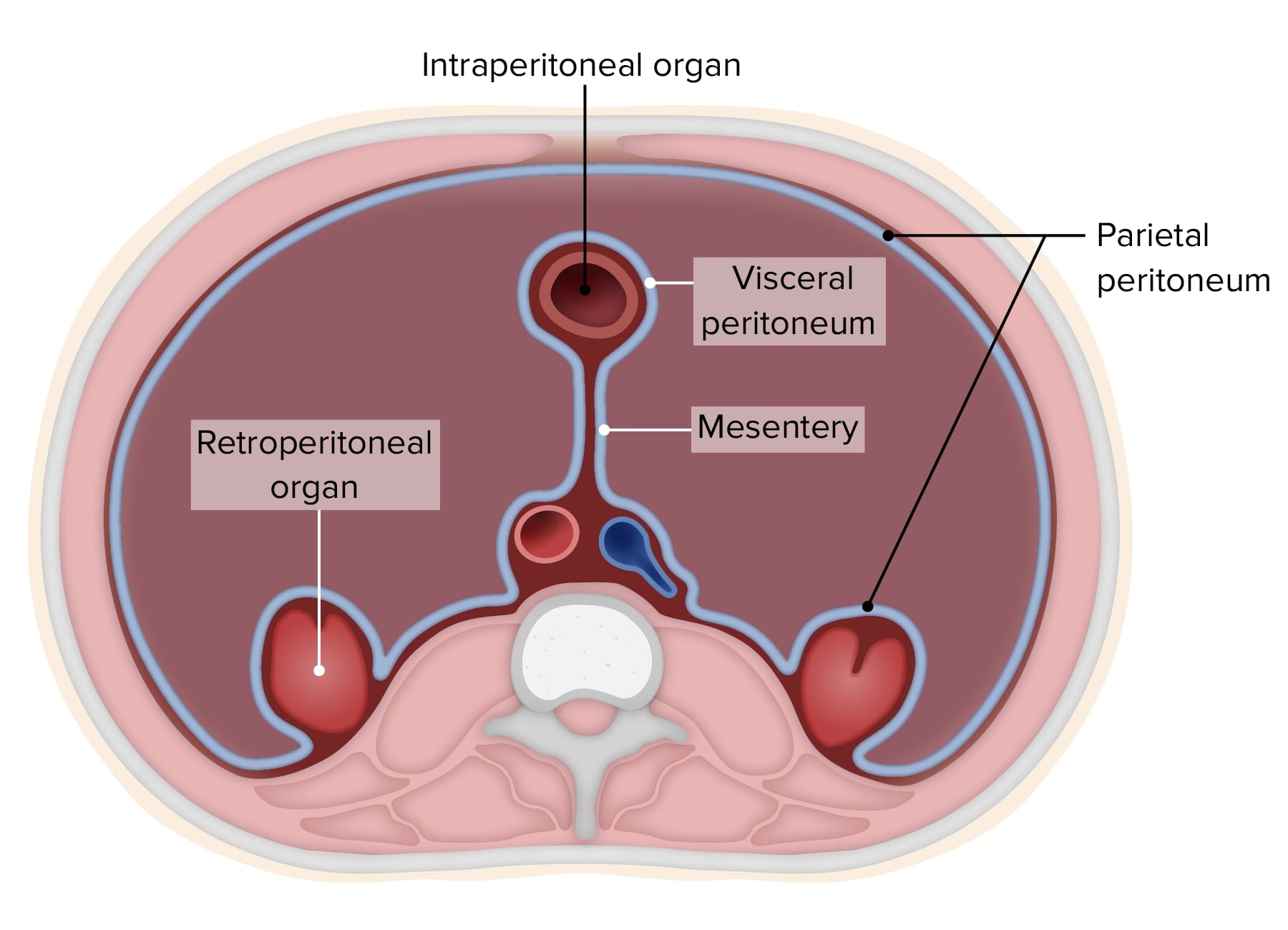Peritoneum and the peritoneal cavity A thin membrane Biology Diagrams The mesentery's classification as an organ is new. For centuries, anatomy textbooks described the mesentery as many mesenteries (plural). The medical community viewed the mesenteries as several peritoneal tissues that attach your intestines to your abdominal wall. The peritoneum is a membrane that covers your abdominal cavity and abdominal

Figure 6: Development of the gut and mesenteries.A. Gut tube migrates from posterior abdominal wall, bringing the dorsal mesentery with it.B. Gut elongates and enlarges.C. Organs grow and rotate, resulting in twists in the mesenteries and peritoneal reflections (ligaments) that connect adjacent organs.
:watermark(/images/watermark_only.png,0,0,0):watermark(/images/logo_url.png,-10,-10,0):format(jpeg)/images/anatomy_term/mesenterium-2/4Jw8jp2r0nckHT7z8GIbfw_Mesenterium_01.png)
TeachMeAnatomy Biology Diagrams
A thin layer of connective tissue is contained within the two layers of peritoneum and provides a passageway for lymphatics, nerves, arteries and veins to reach the viscera, allowing communication between the body wall and internal organs. Mesenteries are also important as they suspend or hold the organs in place to the posterior abdominal wall.. Those that are totally suspended in the cavity

The deepest portion of the peritoneal cavity is the pouch of Douglas in women and the retrovesical space in men, both in the upright and supine position. The mesentery is a double fold of the peritoneum. True mesenteries all connect to the posterior peritoneal wall. These are: The small bowel mesentery; The transverse mesocolon

Anatomy of Peritoneum and Mesentery Biology Diagrams
Comprehensive anatomy of the peritoneum and peritoneal cavity. Organization of spaces of the greater and lesser sacs, mesenteries, and peritoneal ligaments, anchoring the organs. Characterization of the functional anatomy of the small and large bowel mesenteries. Explanation of the nerve supply of the parietal versus visceral peritoneum and the role of the visceral peritoneum in referred pain. Between its two layers - parietal and visceral - is the peritoneal cavity. The peritoneum functions to support and protect abdominopelvic organs. This article will discuss the anatomy of the peritoneum, including key related topics; peritoneal cavity, omenta, mesentery, ligaments, and peritoneal relations. The mesentery is a connective tissue structure that is an extension of the peritoneum and connected to the intestines. The mesentery is formed of double-layer folds from part of the peritoneum

